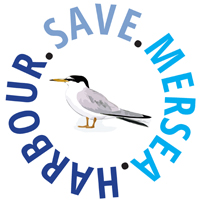HOW ARE WE GOING TO SAVE MERSEA HARBOUR?
It is too late to stop the erosion from happening, but we can help to adjust to the new conditions and slow down the erosion. That is what The Mersea Harbour Protection Trust hopes to do.
How is the Trust going to do this?
By importing a mix of stone, shell and sand from navigation dredging at Harwich to recharge the exposed sites. The Harwich Haven Authority who manage the deep water navigation channels to the ports of Harwich and Felixstowe, are going to dig these channels deeper to allow bigger ships to get to the ports, and some of that material dug out will be a mix of stone, shell and sand.

How will that help?
The material will be pumped in by a huge water jet “rainbow” off the front of the dredger to form an instant “beach”. These “beaches” will roll in and wrap like an Elastoplast around the bits that are washing away. This new beach will be made of hard stones, shell and sand that the waves cannot wash away as easily as the soft muds and saltmarsh that Old Hall Point, Cobmarsh and Packing Marsh are made from, and so Mersea harbour will last longer. By placing the stone, shell and sand mix in front of the worst of the areas that are washing away: the south and east facing edges of Old Hall Point, Cobmarsh and Packing Marsh Islands and to Tollesbury Wick nature reserve.
Where will the recharge go?
How do we know the material wont just wash into our navigation channels?
Because between 1998 and 2002 the Environment Agency did lots of these projects, including placing material to the same areas we want to. Independent monitoring showed that the material washed toward the shores of Old Hall Point, Cobmarsh, Packing Marsh and Tollesbury Wick and Little Terns nested on it.
If the Environment Agency did this work, why does it need doing again?
The Environment Agency only placed half the material they intended to. This was because local concerns were raised about how the placed material would behave and by the time the monitoring was finished it was too late to get more material in place.
The Environment Agency has to prioritise flooding and recent funding cutbacks means that this type of work simply cannot be carried out by them anymore, but they are still helping us.
Why does it have to be done now?
Below the layer of stone, shell and sand mix material Harwich Harbour Authority will be dredging out is clay. Should further dredging be done in the future it will only produce unsuitable hard clays. The material comes from glacial outwash and is very, very clean so won’t cause any pollution.
Is the material placed in one go?
The small dredger we would hope to use carries about 1000 cubic metres (1700 tonnes) and takes about 45 minutes to place each cargo. Two cargoes are placed a day, at each high tide. We hope to place a total of about 95k m3 cubic metres (about 150k tonnes), so if the boat is placing material just to Mersea (and it may well be placing material to other sites in Essex or Suffolk) then it would take about 2 to 3 months.
How much is this all going to cost?
The Trust has estimated a cost of between £70,000 and £180,000, depending on how many expert consultants reports we need to get the consents. If Harwich Haven Authority charge us to bring the material to Mersea and place it (we are hoping to get it for free), then we will need another £300,000. To keep costs at a minimum, all work carried out by the Trust is entirely reliant on donated time. No governing members charge fees or are paid for any work carried out as part of this project.
Where is the Trust going to get so much money?
We will be trying to get money from all sorts of local, national and European sources and use, in particular, potential climate change adaption management for endangered birds as one of our key selling points.
What happens if you don’t get the money?
We will not be able to do the work and Mersea harbour will cease to exist as we know it within 70 to 100 years.
Will the material the Trust wants to place stop all that forever?
No. Eventually it will happen, but by holding onto those key locations of Old Hall Point, Cobmarsh and Packing Marsh, the process can be slowed down to allow change to be managed over a much longer time, “buying” perhaps another 70 to 100 years for the next generation.




